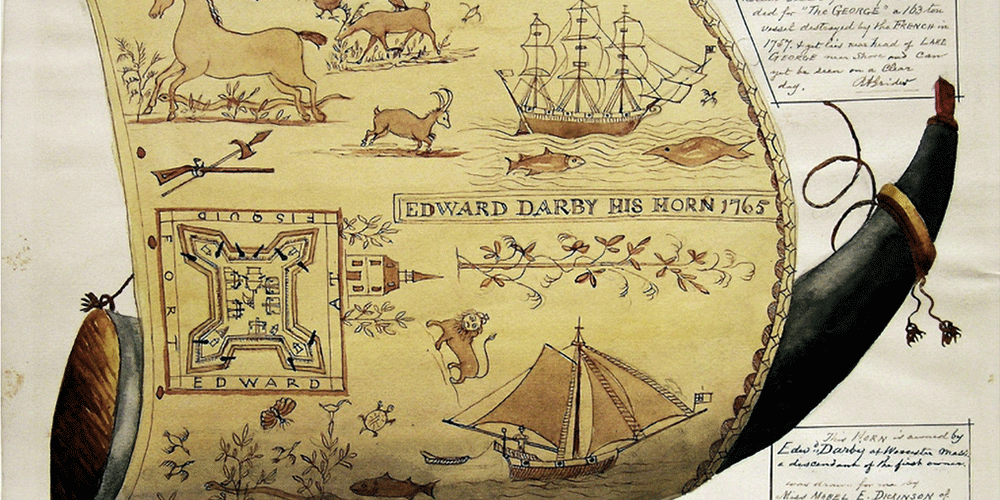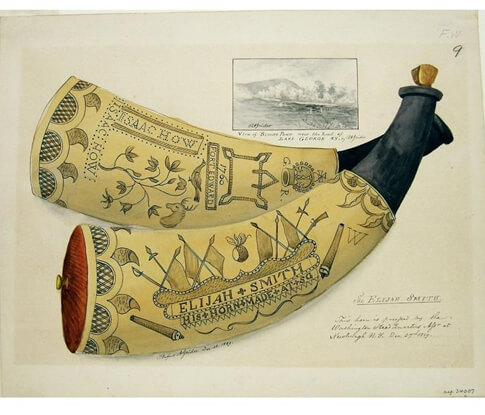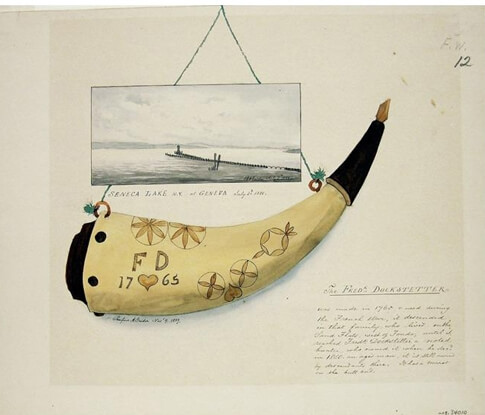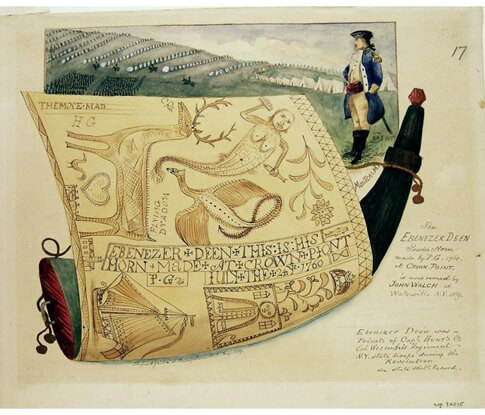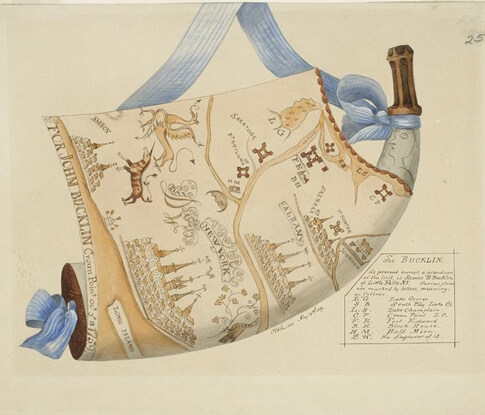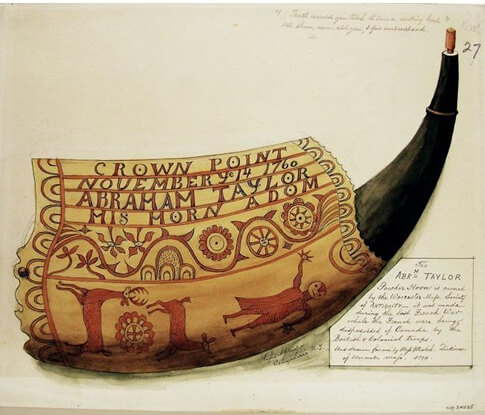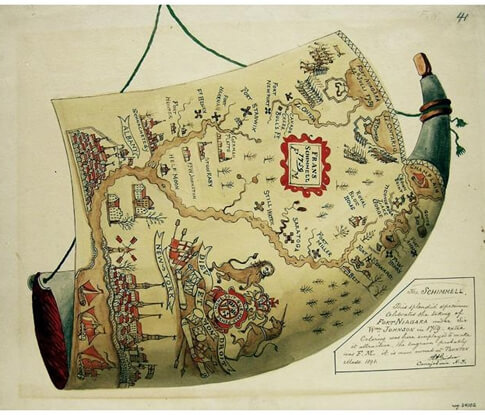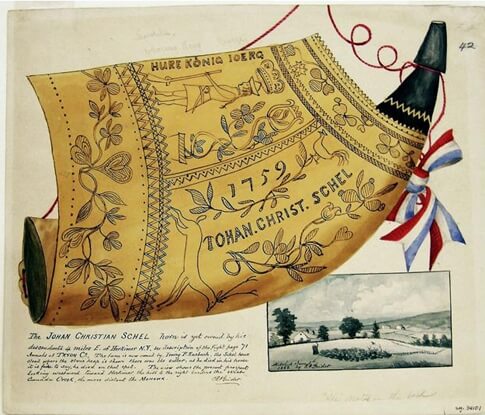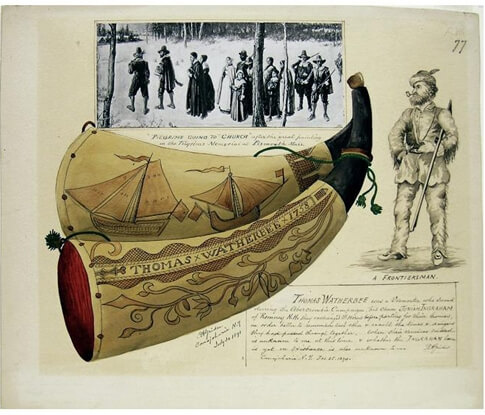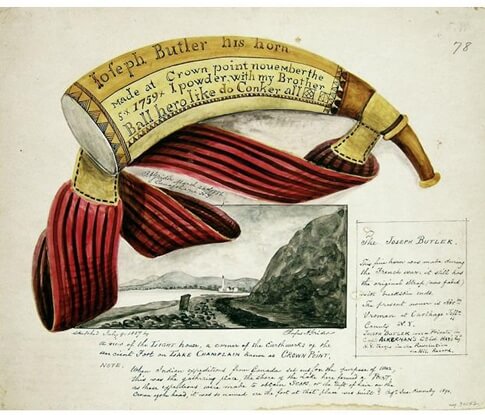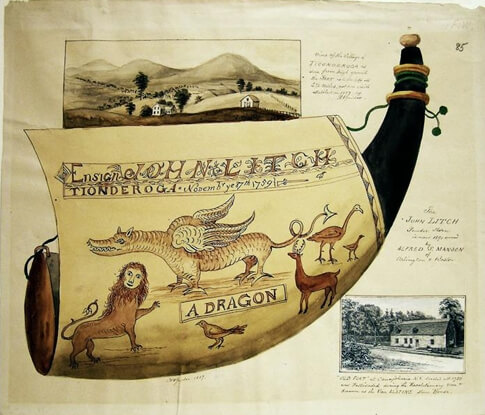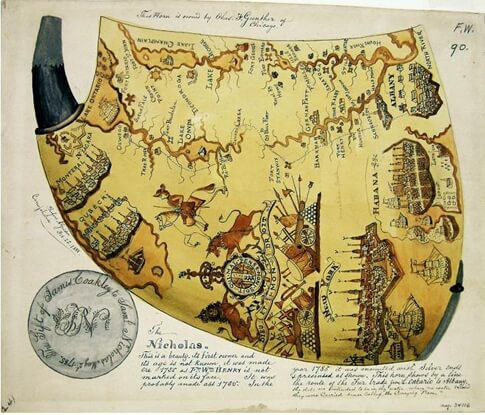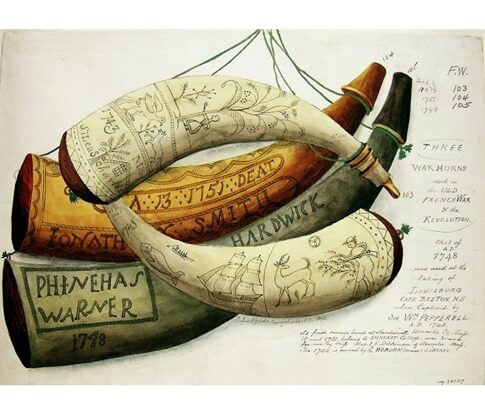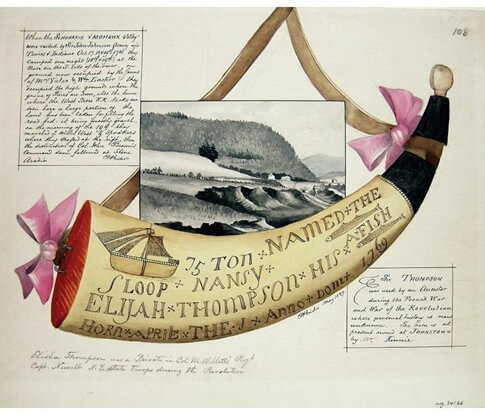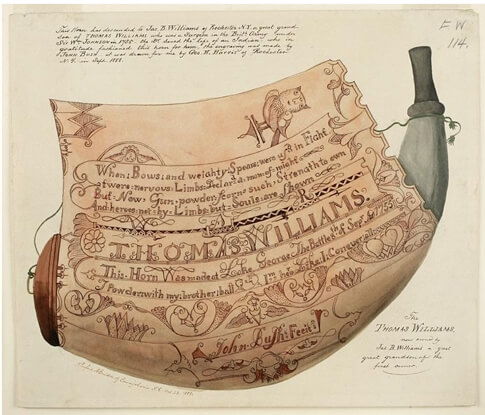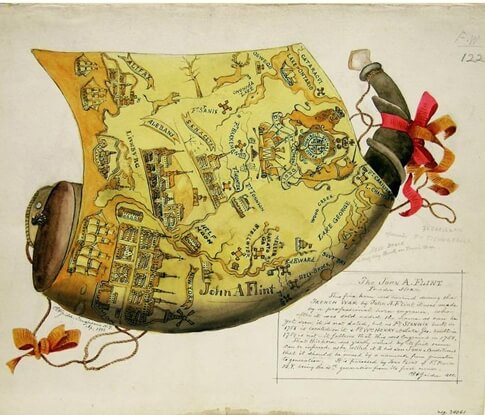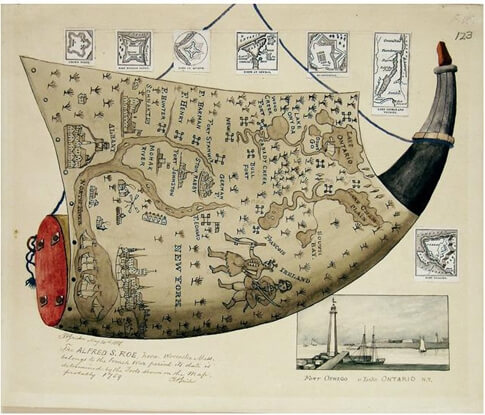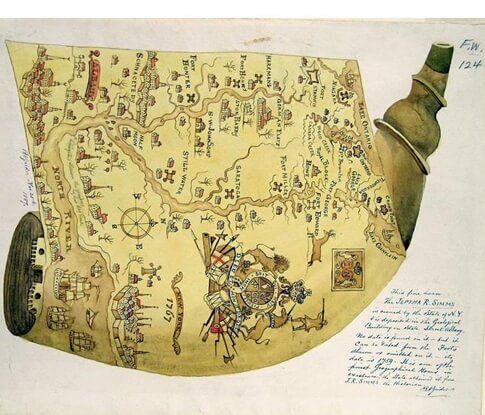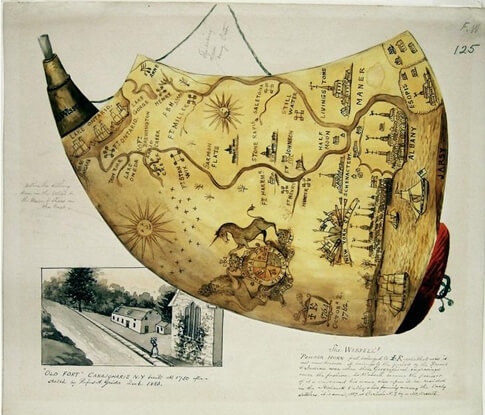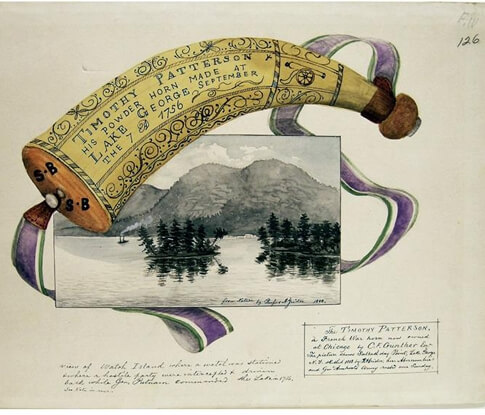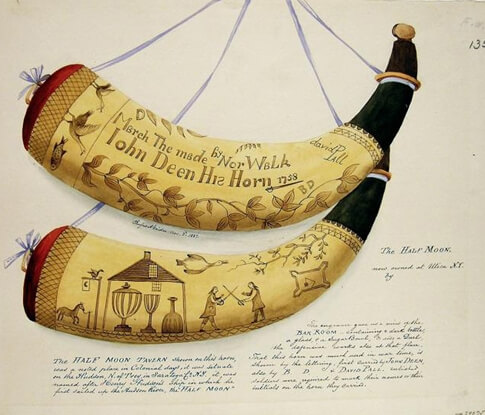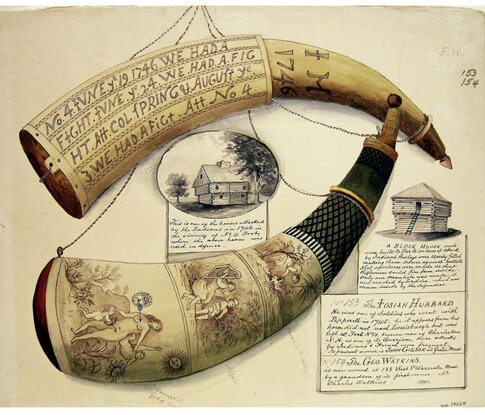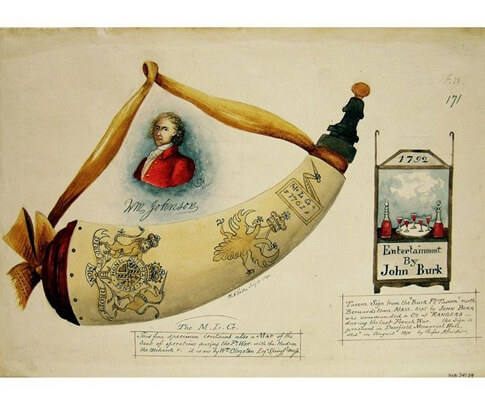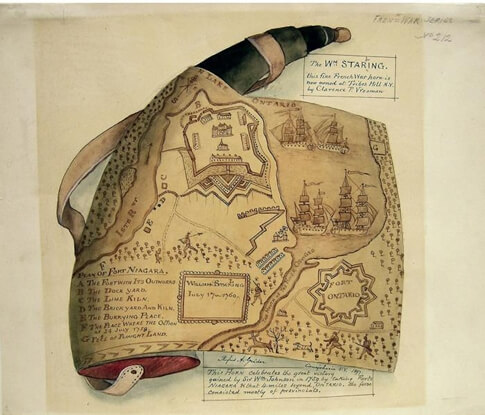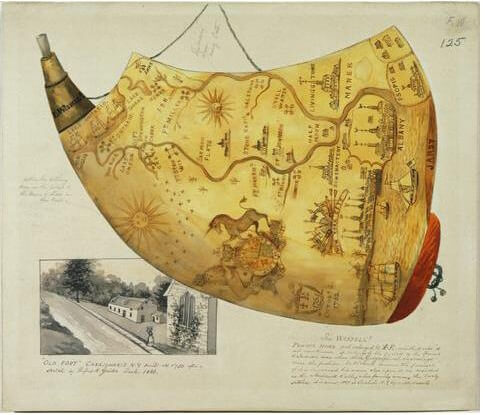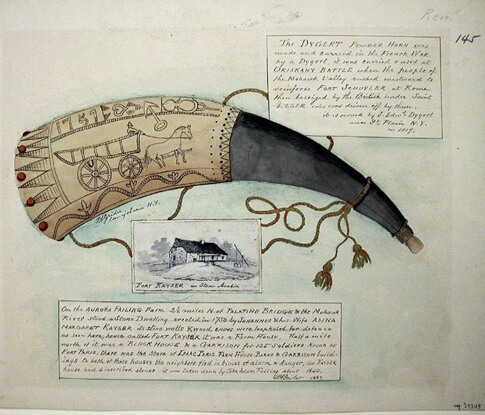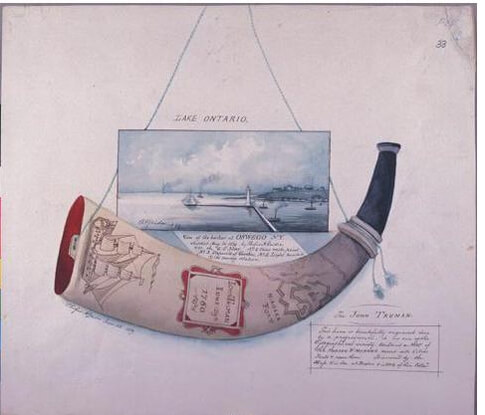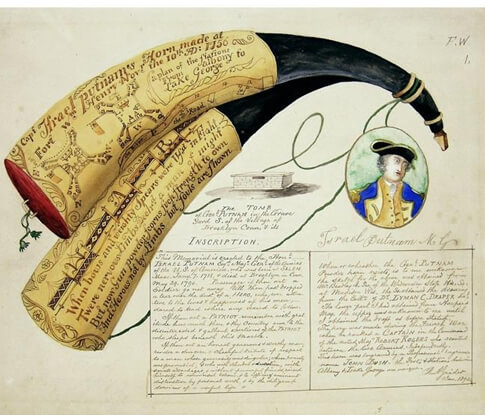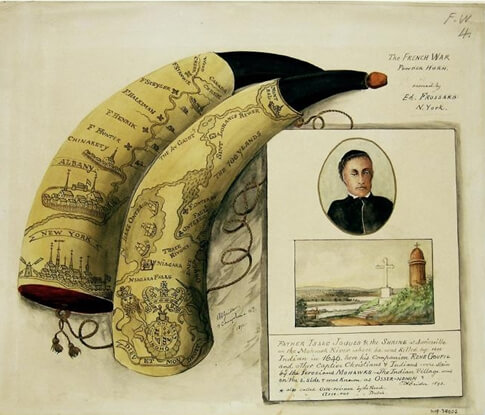See the biography of the watercolorist Rufus Alexander Grider after the images.
A few months ago an old article on powder horns alerted me to the work of the watercolorist Rufus Alexander Grider. He must have had a keen interest in history to be interested to catalog more than 500 engraved powder horns from the French and Indian War and American Revolution periods, by painting them in watercolor.
He was highly motivated to “preserve the memory of very many interesting objects” which might otherwise be lost. Some of them were in the Smithsonian exhibit at the Columbian Exhibition in 1893. His collection is now owned by the NY Historical Society.
In a memorial read by Mr. Dickinson, and published in the “Proceedings of the Worcester Society of Antiquity“, January 1900, you can read how Rufus Grider spent his vacations for several years traveling the country to collect and draw these historical powder horns.
One season while in Boston and vicinity, he visited Lexington, Concord, Salem, and other historic towns in search of powder horns, traveling 50 miles once, just to see one.
In 1891 and 1893, he visited the Worcester Society of Antiquity and the American Antiquarian Society as well as many private collections in the Worcester area.
One time he had heard of an interesting Revolutionary powder horn in Barre but was not allowed to copy it. It was the only time he was refused to draw a powder horn.
It took me a long time to actually find images on line of those watercolors. So, I am glad today to be able to present some of them here, and allow for more of us to discover their beauty. For the complete collection, visit the New York Historical Society museum collections.
Rufus Alexander Grider was born in Lititz, Pennsylvania in 1817. He lived in Bethlehem, PA for many years, where he operated a well-known inn and then moved to Philadelphia where he taught art. In his late sixties he moved to Canajoharie, NY where he taught art and painted a number of landscapes from the Mohawk Valley. He died at 84 in 1900.
If you are in Canajoharie between now and August 14, 2011, don’t miss the exhibition of his work at the Arkell Museum, including 16 of his powder horns watercolors. Click here for more information on the exhibit “Drawn to the Same Place: Rufus Grider and Fritz Vogt 1885-1900”.

